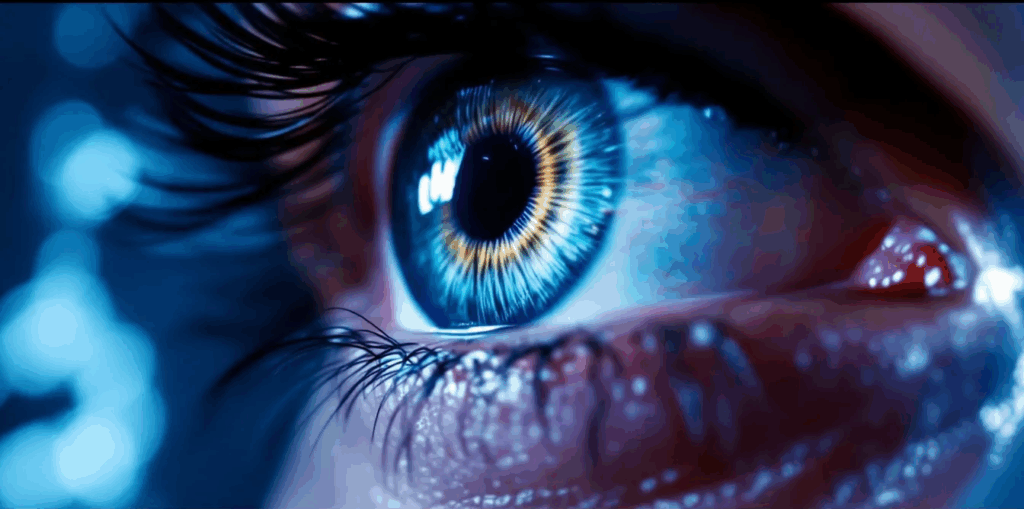
PCP Angel Dust: Complete Guide to Understanding This Dangerous Hallucinogen
Key Takeaways:
- PCP (phencyclidine) is a highly dangerous dissociative hallucinogen with unpredictable and sometimes life-threatening effects.
- Even low or moderate doses can trigger hallucinations, paranoia, or violent behavior, while high doses may cause seizures, coma, or death.
- PCP intoxication often leads to medical emergencies, including hyperthermia, respiratory arrest, and severe psychiatric symptoms.
- There is no safe level of use — street PCP is frequently adulterated, making dosage impossible to control.
- Professional addiction treatment and recovery support are essential for individuals struggling with PCP abuse.
Pro Tip: Always rely on medical, clinical and pharmacological reviewed sources (NIDA, SAMHSA, peer-reviewed toxicology) and licensed clinicians. Street info and forums can be inaccurate and dangerous. This guide is educational and not a substitute for professional medical advice.
Why PCP Angel Dust Demands Attention
Phencyclidine (PCP), more commonly known by its street name angel dust, is a powerful dissociative hallucinogen that has been linked to unpredictable behavior, dangerous medical complications, and long-term psychological harm. First synthesized in the 1950s as an intravenous anesthetic, this illicit drug was quickly abandoned in human medicine due to its severe psychiatric side effects, including agitation, hallucinations, and violent outbursts. Today, PCP remains classified as a Schedule II substance by the Drug Enforcement Administration (DEA) — meaning it has some potential for medical use but carries a high risk of abuse and dependence.
Understanding PCP is not just important for medical professionals. Families, community leaders, and anyone concerned with substance use and abuse need to be aware of how this illicit drug works, how it affects behavior, and what to do in an emergency situation. In recent years, reports from emergency medicine specialists, law enforcement agencies, and the National Institute on Drug Abuse (NIDA) have documented an increase in phencyclidine intoxication cases, some requiring aggressive medical intervention and psychiatric care.
This guide from Legacy Healing provides a complete overview of PCP angel dust — from its history and street names to its neurological effects, patterns of abuse, risks at different dosages, and treatment options. By combining clinical insights, public health data, and recovery strategies, we aim to give readers not only accurate information but also a clear pathway toward prevention and treatment.
At Legacy Healing, we believe education is a critical tool in reducing substance-related harm. Whether you are a healthcare provider, a concerned family member, or someone seeking help for yourself, understanding the realities of PCP can be lifesaving.
Understanding Phencyclidine PCP – Core Facts and Definitions
What is PCP?
Phencyclidine (PCP) is the chemical name for a synthetic dissociative anesthetic first developed in 1926 and later introduced for clinical use in the 1950s. Its full chemical designation is 1-(1-phenylcyclohexyl) piperidine. Although once tested as an intravenous anesthetic in surgery, it was quickly discontinued due to dangerous side effects, including psychosis, hallucinations, and violent agitation.
Today, PCP is categorized by the Drug Enforcement Administration (DEA) as a Schedule II controlled substance, reflecting its high potential for abuse and psychological dependence. While it shares some similarities with other dissociative drugs such as ketamine and dextromethorphan (DXM), PCP’s effects are far more unpredictable and severe.
Street Names and Common Forms
On the street, PCP is sold under a variety of names that reflect its appearance, method of use, or perceived effects. Some of the most common include:
- Angel Dust
- Embalming Fluid
- Supergrass
- Boat
- Tic Tac
- Zoom
- Shermans
- Rocket Fuel
- Peace Pill
- Love Boat
- Wack / Ozone
- Killer Joints (when mixed with marijuana)
- Whacko Tobacco
PCP typically appears as a white crystalline powder that dissolves easily in liquid. It is often sold in:
- Powder form (snorted, smoked, or swallowed)
- Liquid form (used to dip cigarettes or joints, sometimes mislabeled as “embalming fluid”)
- Tablets or capsules
Because it is frequently combined with marijuana or tobacco, users may unknowingly consume PCP-laced products. This makes this psychoactive drug especially dangerous, as individuals expecting a mild cannabis effect may instead experience full phencyclidine intoxication, with symptoms ranging from disorientation to violent psychosis.
Key Distinctions from Other Substances
- PCP is often confused with veterinary tranquilizers (“horse tranquilizer” or “animal tranquilizer”), but this is a misconception. While both are dissociatives, drugs like ketamine are structurally different and have safer, legitimate medical uses.
- PCP is more likely than ketamine or LSD to trigger violent or aggressive behavior.
- Its effects last longer than most drugs called hallucinogens, ranging from 6 to 48 hours, depending on the dose.
- Unlike some hallucinogens, PCP carries a high risk of psychological dependence.
Pharmacology: How PCP Affects the Brain and Body
Mechanism of Action
Phencyclidine (PCP) is a mind altering drug that works primarily as an N-methyl-D-aspartate (NMDA) receptor antagonist in the central nervous system. By blocking NMDA receptors in the brain, the drug binds within the receptor’s ion channel and disrupts normal glutamate neurotransmission, which is essential for memory, cognition, and sensory perception. This disruption produces the hallmark dissociative state, where PCP users feel detached from their body or environment.
Unlike many other hallucinogens, PCP is not limited to one pathway. It also impacts:
- Dopamine receptors – contributing to euphoria, agitation, and psychosis-like symptoms.
- Opioid receptors – partially explaining its pain-numbing effects.
- Nicotinic acetylcholine receptors (nicotinic receptors) – influencing motor control, cognition, and mood.
This multi-receptor interaction explains why PCP can mimic effects of stimulants, depressants, and hallucinogens simultaneously, making it uniquely dangerous and unpredictable.
Effects on the Brain
- Short-term: Hallucinations (visual, auditory, tactile), distorted perception of time and space, paranoia, and loss of coordination.
- Medium-term: Disorganized thinking, violent outbursts, detachment from reality, and potential psychosis.
- Long-term: Memory loss, difficulty concentrating, depression, and an increased risk of developing persistent psychotic disorders in heavy users.
Patterns of drug use (frequency, dose, and polysubstance use) strongly influence severity and duration of symptoms; in clinical practice, clinicians often see worse outcomes when PCP is combined with depressants or stimulants.
Effects on the Body
- Neurological: Nystagmus (rapid, uncontrolled eye movements), seizures, and muscle rigidity.
- Cardiovascular: Elevated blood pressure, irregular heartbeat, and risk of cardiorespiratory failure.
- Thermoregulation: Hyperthermia (dangerously high body temperature) is a common and life-threatening complication.
- Pain perception: PCP suppresses normal pain responses, leading to dangerous injuries that users may not recognize until severe.
Comparison with Related Drugs
- Ketamine: Also an NMDA antagonist, but with a shorter duration and safer medical use in anesthesia.
- LSD (Lysergic acid diethylamide): Primarily acts on serotonin receptors, with hallucinogenic effects but rarely violent outcomes.
- MDMA (Ecstasy): Acts mainly on serotonin, dopamine, and norepinephrine; very different in mechanism despite recreational overlap.
In clinical practice, PCP is far more likely to trigger violent or erratic behavior, and its effects can last up to 48 hours—unlike the shorter window of LSD or ketamine
Long-Term Effects of PCP
Chronic PCP drug use has caused patients memory and attention problems, mood changes (anxiety/depression), increased risk of persistent psychosis, malnutrition and weight loss, and social/occupational impairment. With professional treatment, many people recover function over time; early intervention improves outcomes. Evidence-based care often includes talk therapy (e.g., CBT, family therapy) alongside medical management and relapse-prevention planning.
Epidemiology and Public Health Concerns
Prevalence of PCP Use
While PCP is not among the most commonly abused substances in the United States, its impact is disproportionately severe due to the unpredictable and violent nature of intoxication. According to the National Institute on Drug Abuse (NIDA):
- Approximately 0.7% of 12th-grade students reported using PCP in 2022.
- Around 1.7% of adults aged 25 and older report lifetime exposure.
- Emergency department visits linked to PCP increased significantly between 2005 and 2011, reflecting a troubling resurgence in certain regions.
These figures may appear low compared to alcohol, opioids, or cannabis, but each case of PCP use carries an unusually high risk of emergency medical intervention and psychiatric complications.
Emergency Department Impact
The Substance Abuse and Mental Health Services Administration (SAMHSA) and formally the Drug Abuse Warning Network (DAWN) have documented thousands of emergency department (ED) visits annually related to PCP. These often involve:
- Severe agitation and violent behavior requiring physical restraints.
- Accidental injury due to suppressed pain response.
- Hyperthermia and seizures, sometimes requiring ICU-level care.
- Respiratory arrest and coma in overdose situations.
The average cost of treating a single PCP-related medical emergency can exceed $50,000, placing a heavy burden on hospitals and families.
Community and Public Safety Risks
PCP intoxication poses unique risks that extend beyond the individual user:
- Law enforcement encounters: Police frequently report combative, irrational, or unpredictable behavior during PCP-related arrests.
- Household exposure: Children in homes where PCP is stored or used face accidental ingestion risks.
- Public safety: PCP-related incidents often occur in public spaces, leading to community-wide safety concerns and strain on emergency medicine response systems.
Why PCP Remains a Public Health Priority
Despite being less prevalent than opioids or methamphetamine, PCP’s dangers justify its continued surveillance by the DEA, Centers for Disease Control and Prevention (CDC), and local health agencies. The drug’s combination of neurotoxicity, violence potential, and long-lasting psychological effects makes it one of the most hazardous hallucinogens in circulation today.
PCP Angel Dust Effects by Dosage and Method of Use
Dosage and Effect Spectrum
The effects of phencyclidine (PCP) vary dramatically depending on dose, method of administration, and individual tolerance. Unlike many hallucinogens, PCP does not follow a predictable pattern — even small amounts can lead to dangerous outcomes.
Below is a structured comparison of PCP effects at different dosage levels:
| Dosage Range | Physical Effects | Psychological Effects | Risk Level | Duration |
|---|---|---|---|---|
| Low (1–5 mg) | Numbness, slurred speech, poor coordination, elevated blood pressure | Detachment from surroundings, mild hallucinations, feeling of invulnerability | Moderate | 4–6 hours |
| Moderate (6–10 mg) | Rapid eye movements (nystagmus), excessive sweating, blurred vision, muscle stiffness | Paranoid delusions, severe hallucinations, memory impairment | High | 6–8 hours |
| High (15–20 mg) | Seizures, hyperthermia, muscle rigidity, cardiorespiratory depression | Psychosis, violent outbursts, complete dissociation | Severe | 8–12 hours |
| Very Large (20 mg+) | Coma, kidney failure, respiratory arrest, rhabdomyolysis (muscle breakdown) | Unconsciousness, potential brain damage, life-threatening toxicity | Critical | 12–48 hours |
Method of Administration and Onset Time
How PCP enters the body significantly influences how quickly symptoms appear:
- Smoking (cigarettes or marijuana dipped in PCP): Onset in 2–5 minutes.
- Snorting (insufflation): Onset in 5–15 minutes.
- Oral ingestion (tablets, capsules, or powder mixed in liquid): Onset in 30–60 minutes.
- Intravenous injection (IV): Nearly immediate adverse effects, with the highest overdose risk.
Because PCP is often combined with cannabis or tobacco without the user’s knowledge, many overdoses occur when individuals expect a mild high but instead ingest a life-threatening dose of PCP.
Key Risks to Emphasize
- Unpredictability: The same moderate dose can affect users differently depending on body chemistry, tolerance, and other substances used.
- Violence potential: Higher doses increase the risk of aggressive or erratic behavior, endangering both the user and those around them.
- Extended duration: Unlike substances such as alcohol or MDMA, PCP’s effects may last up to 48 hours, leading to prolonged psychiatric crises and medical emergencies.
Quick Answers: PCP in 30 Seconds
- What does PCP smell or taste like? Often chemical/ether-like; taste and odor vary due to cutting agents and solvents.
- How long does PCP last when smoked? Effects can begin in 2–5 minutes and may last several hours, with after-effects up to a day or more.
- PCP vs. ketamine—what’s the difference? Both are dissociatives, but PCP is longer-acting and more likely to cause violent agitation and psychosis.
- Is PCP addictive? Yes—primarily psychological dependence with compulsive use patterns.
- Can secondhand smoke expose others to PCP? Passive exposure risk is low but not zero in poorly ventilated spaces.
- Is “embalming fluid” actually used? The term on the street usually refers to liquid PCP, not real mortuary chemicals.
PCP and Other Substances: Dangerous Interactions
Mixing PCP with alcohol, opioids, or benzodiazepines raises the risk of blackouts, respiratory complications, and severe confusion. Combining with cannabis can rapidly escalate paranoia and hallucinations. Polysubstance use makes symptoms harder to predict and treat—if mixed use is suspected, call 911.
Recognizing Phencyclidine Intoxication: A Step-by-Step Guide
Identifying phencyclidine intoxication early can save lives. Because PCP affects multiple neurotransmitter systems, its symptoms are often more severe and unpredictable than those of other hallucinogens. Knowing the warning signs allows families, healthcare providers, and community members to respond quickly and safely.
Step 1: Identifying Physical Symptoms
Look for these body-related red flags:
- Rapid, involuntary eye movements (nystagmus)
- Numbness or tingling in hands and feet
- Loss of balance and poor coordination
- Elevated blood pressure and heart rate
- Overheating (hyperthermia) and excessive sweating
- Drooling or slurred speech
- Blank, unresponsive staring
Step 2: Recognizing Behavioral Warning Signs
PCP is notorious for causing erratic and violent behavior. Key indicators include:
- Sudden aggression or combative actions
- Outbursts of bizarre or unpredictable behavior
- Displays of “superhuman strength” (linked to pain-numbing effects)
- Alternating between catatonic withdrawal and extreme agitation
- Complete disregard for surroundings or personal safety
Step 3: Watching for Psychological Symptoms
PCP affects perception and thought processes in ways that can rapidly escalate:
- Visual, auditory, or tactile hallucinations
- Paranoid delusions (“someone is out to get me”)
- Profound detachment from reality (dissociation)
- Memory loss and confusion
- Inability to recognize familiar people or places
Why These Signs Matter
Unlike many other illegal street drugs, PCP intoxication frequently leads to medical emergencies that require immediate professional intervention. Failure to recognize these symptoms can result in:
- Severe self-injury (due to lack of pain awareness)
- Danger to family members, first responders, or bystanders
- Escalation into seizures, respiratory distress, or coma
Related Medical Concerns
- PCP-induced psychotic disorder: psychosis that persists beyond intoxication.
- Rhabdomyolysis: muscle breakdown; warning signs include severe muscle pain, dark urine.
- Excited delirium-like presentations: extreme agitation, hyperthermia, and metabolic stress; requires rapid medical care.
Emergency Response and First Aid
When someone is intoxicated on PCP (phencyclidine), the situation can escalate quickly. Unlike many other substances, PCP often triggers violent or unpredictable behavior, making safety the top priority for both the user and those nearby.
Crisis Resources
- 911 for medical emergencies
- 988 Suicide & Crisis Lifeline (24/7)
- SAMHSA Helpline: 1-800-662-HELP (4357)
When to Call 911 Immediately
Certain symptoms indicate a medical emergency requiring urgent intervention:
- Signs of respiratory distress or shallow/irregular breathing
- Body temperature above 103°F (39.4°C) — hyperthermia
- Seizures or loss of consciousness
- Severe agitation or violent behavior posing danger to others
- Suspected ingestion of a very large dose (20mg or more)
Safety Measures While Waiting for Help
Because PCP intoxication often involves aggression and confusion, maintaining safety is essential:
- Keep a safe distance and avoid sudden movements.
- Speak calmly and reassuringly; avoid confrontation.
- Remove potential weapons or dangerous objects from the area.
- Do not attempt physical restraint unless absolutely necessary for safety.
- Ensure bystanders, children, or vulnerable individuals are moved away.
First Aid Guidelines
While awaiting emergency medical services:
- If overheated, help the person cool down with fans, cool cloths, or ice packs.
- If unconscious, place them in the recovery position (on their side) to keep the airway clear.
- Monitor breathing and pulse continuously.
- Do not induce vomiting — PCP drug’s effects are neurological, not gastrointestinal.
- If you witnessed the use, tell responders whether the substance was ingested orally, injected intravenously, smoked, or snorted.
- Write down observed symptoms and timeline, as this helps paramedics deliver effective care.
Role of Emergency Responders
Upon arrival, paramedics and hospital staff may use:
- Benzodiazepines (e.g., lorazepam, diazepam) to reduce agitation or seizures.
- Cooling techniques for hyperthermia.
- Cardiac and respiratory monitoring to prevent life-threatening complications.
- IV fluids and electrolytes to support kidney and muscle function.
Why Immediate Action Matters
PCP intoxication can escalate into respiratory arrest, coma, or death within minutes if untreated. Prompt emergency care not only reduces immediate danger but also opens the door for follow-up treatment and long-term recovery.
Treatment and Recovery Options
Immediate Medical Treatment
Once a person intoxicated with PCP (phencyclidine) reaches the hospital, stabilization is the first priority. Emergency physicians and toxicologists focus on:
- Monitoring vital signs for at least 24–48 hours due to PCP’s long half-life.
- Administering benzodiazepines (such as lorazepam) to control agitation, seizures, or severe anxiety.
- Using atypical antipsychotics in cases of persistent psychosis.
- Providing IV fluids and electrolytes to prevent kidney damage from rhabdomyolysis (muscle breakdown).
- Regulating body temperature through cooling techniques to address hyperthermia.
- Continuous cardiac and respiratory monitoring to prevent sudden complications.
Detoxification and Withdrawal Care
Although PCP does not cause severe physical withdrawal like opioids or alcohol, it can lead to powerful psychological dependence. Symptoms may include cravings, depression, anxiety, and paranoia. A medically supervised detox ensures:
- Safe monitoring of withdrawal symptoms.
- Stabilization with supportive medications.
- Transition into long-term therapy without relapse risk.
Therapeutic Approaches for Recovery
Breaking the cycle of PCP use requires more than detox. Effective treatment integrates multiple evidence-based therapies:
- Cognitive Behavioral Therapy (CBT): Helps individuals recognize and change thought patterns linked to drug use.
- Motivational Interviewing (MI): Builds readiness to embrace sobriety.
- Group therapy and peer support: Creates accountability and connection in recovery.
- Family therapy: Addresses the impact on loved ones and strengthens support networks.
- Dual-diagnosis care: Treats co-occurring mental health disorders such as depression, anxiety, or schizophrenia.
Legacy Healing’s Comprehensive Approach
At Legacy Healing, our programs are designed to support every stage of recovery:
- Medical detoxification supervised by licensed clinicians.
- Individualized treatment plans tailored to each client’s mental health, history of substance use, and personal goals.
- Holistic therapies such as mindfulness, nutrition counseling, and fitness to rebuild physical and emotional health.
- Aftercare planning and relapse prevention, ensuring long-term success beyond treatment.
- A compassionate, community-driven environment that emphasizes the link between trauma and healing.
Recovery Outcomes
While recovery from PCP addiction is challenging, many individuals achieve long-term sobriety with structured addiction treatment. Success depends on:
- Early intervention.
- Consistent participation in therapy.
- Ongoing family and community support.
- Access to professional care and relapse prevention resources.
Relapse Prevention: Your Ongoing Plan
- Map and avoid triggers (people/places/states—use HALT: hungry, angry, lonely, tired).
- Schedule regular therapy/peer support.
- Crisis plan (who to call, where to go, meds on file).
- Avoid high-risk settings and polysubstance use.
- Family involvement and secure storage/removal of substances.
Myths-vs.-Facts About PCP (Angel Dust)
Misinformation about PCP (phencyclidine) has fueled dangerous choices and minimized awareness of its true risks. By addressing these myths directly, we can help families, communities, and individuals seeking treatment make informed decisions.
| Myth | Fact |
|---|---|
| PCP gives “superhuman strength.” | It numbs pain and disrupts perception, leading to dangerous overexertion—not increased strength. |
| It’s safe if mixed with marijuana. | Mixing PCP with marijuana or tobacco cigarettes increases paranoia, psychosis, and medical emergencies. |
| Small amounts are safe. | Adulterants and variability make even “low” doses risky. |
| PCP addiction is rare. | Psychological dependence and compulsive use are common among regular users. |
| PCP is just like LSD. | Different mechanisms; PCP has higher aggression/psychosis risk and longer duration. |
Myth 1: PCP Gives Users “Superhuman Strength”
- The Truth: PCP does not increase muscle power. Instead, it numbs pain by acting on NMDA receptors and opioid pathways, which allows users to push past normal physical limits. This can result in severe self-injury (e.g., breaking glass with bare hands) without the individual recognizing the harm.
Myth 2: PCP is Harmless When Mixed with Marijuana
- The Truth: PCP is often smoked in joints or cigarettes dipped in liquid PCP (“Killer Joints” or “Love Boat”). Users may believe they’re consuming cannabis, but the combination can trigger violent hallucinations, paranoia, and medical emergencies. Far from harmless, this mix increases unpredictability and overdose risk.
Myth 3: Small Amounts Are Safe to Experiment With
- The Truth: Even low doses (1–5 mg) can cause hallucinations, paranoia, and dissociation. Because PCP is often adulterated with other chemicals, dosing is unpredictable. What appears to be a “small amount” may actually contain dangerously high concentrations.
Myth 4: PCP Addiction is Rare
- The Truth: While PCP does not typically cause strong physical withdrawal like opioids, it creates intense psychological dependence. Users develop compulsive drug-seeking behaviors, and chronic use can lead to long-term psychiatric issues. Clinical research confirms that professional treatment is often required for lasting recovery.
Myth 5: PCP is Just Another Hallucinogen Like LSD
- The Truth: Unlike LSD, which primarily targets serotonin receptors, PCP impacts multiple systems (glutamate, dopamine, opioid receptors). This makes it more likely to cause aggression, psychosis, and prolonged intoxication lasting up to 48 hours.
Real-Life Case Study: PCP Angel Dust Emergency Response
Case Overview
A 24-year-old male was transported to the emergency department by police after being discovered in a public park. He was naked, combative, and breaking car windows with his bare hands, despite having severe lacerations. Officers noted bizarre statements about “demons” and erratic physical movements.
Initial Presentation
- Vital signs: Blood pressure 180/110, heart rate 140 bpm, temperature 104°F (40°C).
- Physical findings: Dilated pupils, rapid involuntary eye movements (nystagmus), multiple deep cuts on both hands.
- Behavioral status: Alternated between violent outbursts and catatonic, withdrawn states.
- Patient self-report: Claimed to feel “outside of his body” and described intense visual hallucinations.
Emergency Treatment Approach
Hospital staff initiated immediate interventions to stabilize the patient:
- Sedation: Administered lorazepam (4 mg IV) to reduce agitation and control seizures.
- Temperature regulation: Ice packs, cooling blankets, and chilled IV fluids for hyperthermia.
- Cardiac monitoring: Continuous ECG due to risk of arrhythmias.
- Lab results: Elevated creatine kinase levels indicated rhabdomyolysis (muscle breakdown).
- Wound care: Surgical consultation for deep lacerations requiring sutures.
Recovery Timeline
- Hour 1–6: Agitation reduced under sedation; vital signs stabilized.
- Hour 12–24: Orientation partially restored, though paranoid delusions persisted.
- Day 2–3: Resolution of hallucinations and psychosis; psychiatric evaluation conducted.
- Day 4: Discharged with outpatient referral for addiction treatment and counseling.
Resource Utilization
- ICU monitoring: 48 hours
- Total hospital costs: $47,000
- Psychiatric consultation: Provided for evaluation and recovery planning
- Social work intervention: Connected patient to an addiction recovery program
Lessons Learned
- Early recognition of PCP intoxication by law enforcement prevented more serious injury.
- Aggressive medical management of hyperthermia and agitation was life-saving.
- Family education on relapse prevention and withdrawal monitoring was crucial for discharge planning.
Drug Testing for PCP: Windows & Confirmation
Routine urine screens may detect PCP for days; blood for 1–2 days; hair for up to 90 days. Depending on frequency of use and metabolism, a person may test positive on urine tests for several days (longer with chronic use). Detection varies by frequency, metabolism, and test sensitivity. For employment, legal, or clinical decisions, request confirmatory testing (e.g., GC/MS) to reduce false positives/negatives.
Immediate Steps for Families and Communities
- Recognize the signs of PCP intoxication — including violent behavior, hallucinations, and dissociation.
- Call 911 immediately if overdose or aggression occurs.
- Educate loved ones about the dangers of PCP and other hallucinogens.
- Seek professional help early — recovery outcomes improve significantly with timely intervention.
- Connect with trusted resources like the SAMHSA Helpline (1-800-662-4357) or an accredited medical detox and rehab such as Legacy Healing to learn about treatment options.
Find Legacy Healing Near You
Locations: Los Angeles, CA • Cincinnati, OH • Cherry Hill, NJ • Parsippany, NJ
Services: Medical detox • Residential • PHP • IOP • Dual-diagnosis
Call 24/7: (888) 534-2295
PCP Addiction Treatment Options at Legacy
At Legacy Healing, we understand that recovery from PCP and other hallucinogens requires more than short-term medical care. Our team provides:
- Medically supervised detox to ensure safety during withdrawal
- Individualized treatment plans tailored to each client’s needs
- Therapeutic interventions such as CBT, family therapy, and group counseling
- Holistic healing programs that address mind, body, and spirit
- Aftercare and relapse prevention to support long-term recovery
If you or a loved one is struggling with PCP use, help is available 24/7. Recovery is possible — taking the first step today can prevent life-threatening complications tomorrow.
Insurance & Getting Started
We accept most PPO plans, including BCBS, Aetna, NYSHIP, and more. Same-day assessments may be available. Start confidentially: Verify Insurance • Admissions
Coverage varies by plan and location; verification is required prior to admission.
Glossary
NMDA receptor (N-methyl-D-aspartate receptor)
A receptor in the brain that responds to the neurotransmitter glutamate and is critical for learning, memory, and perception. PCP blocks NMDA receptors, causing dissociation, hallucinations, and cognitive disruption.
Nystagmus
Rapid, involuntary eye movements (side-to-side, up-and-down, or rotary). It’s a classic physical sign of PCP intoxication observed by clinicians and first responders.
Rhabdomyolysis
Breakdown of muscle tissue that releases proteins (like myoglobin) into the blood, which can damage the kidneys. It can occur during severe PCP intoxication due to agitation, hyperthermia, or prolonged muscle rigidity.
DAWN (Drug Abuse Warning Network)
A federal public health surveillance system that tracked drug-related emergency department visits in the U.S. DAWN data have been used to quantify the burden of PCP-related ER cases.
Dissociation
A state in which a person feels detached from their body, thoughts, or surroundings (e.g., “outside my body”). This is a hallmark effect of PCP due to NMDA receptor blockade.
GC/MS (Gas Chromatography–Mass Spectrometry)
A laboratory confirmation test that separates and precisely identifies substances in a sample. Used to confirm PCP after an initial screening test and reduce false positives/negatives.
References and Resources for Substance Abuse
- National Institute on Drug Abuse (NIDA) – Psychedelic and Dissociative Drugs
- Drug Enforcement Administration (DEA) – Controlled Substance Schedules
- Drug Enforcement Administration (DEA) – Diversion Control Division – Phencyclidine – PDF. [Accessed 2025 Sept. 29]
- Substance Abuse and Mental Health Services Administration (SAMHSA) – Treatment Locator & Helpline | 1-800-662-HELP (4357)
- Substance Abuse and Mental Health Services Administration (SAMHSA) – Drug Abuse Warning Network (DAWN): Findings from Drug-Related Emergency Department Visits, 2021.
- Centers for Disease Control and Prevention (CDC) – Drug Overdose Surveillance and Data
- Ahmad, G. (1987). Abuse of Phencyclidine (PCP) a Laboratory Experience. Journal of Toxicology: Clinical Toxicology, 25(4), 341–346. https://doi.org/10.3109/15563658708992637
- Bey T, Patel A. Phencyclidine intoxication and adverse effects: a clinical and pharmacological review of an illicit drug. Cal J Emerg Med. 2007 Feb;8(1):9-14. PMID: 20440387; PMCID: PMC2859735.
- Koseki T, Nabeshima T. [Phencyclidine abuse, dependence, intoxication, and psychosis]. Nihon Rinsho. 2010 Aug;68(8):1511-5. Japanese. PMID: 20715485.
Frequently Asked
Questions about Pcp Angel Dust
How long does PCP stay in your system for drug tests?
PCP can be detected in:
- Urine: 2–4 days after occasional use, up to 30 days for chronic users.
- Blood: 24–48 hours.
- Hair follicles: Up to 90 days.
Detection times vary based on frequency of use, metabolism, and overall health.
Can you overdose on PCP?
Yes. High doses (15–20 mg or more) can cause seizures, coma, kidney failure, and respiratory arrest. Even smaller amounts may be life-threatening when combined with alcohol, opioids, or benzodiazepines.
What should I do if I suspect someone is using PCP?
Call 911 immediately if there are signs of overdose, aggression, or unconsciousness. For ongoing use, contact addiction professionals. The SAMHSA Helpline (1-800-662-4357) provides 24/7 confidential support and treatment referrals.
Is there a medication that reverses PCP’s effects?
No specific antidote exists. Treatment is supportive, focusing on sedation (often with benzodiazepines), cooling for hyperthermia, and monitoring of heart and lung function until the drug clears the system.
How addictive is PCP compared to other illicit drugs?
PCP causes strong psychological dependence, leading to compulsive drug-seeking behavior. While withdrawal symptoms are less physically intense than opioids or alcohol, recovery often requires professional treatment, therapy, and long-term support.
Why is PCP considered more dangerous than other hallucinogens?
Unlike LSD or psilocybin, PCP impacts multiple neurotransmitter systems (glutamate, dopamine, opioid receptors). This makes it more likely to cause violence, psychosis, and medical emergencies that can last up to 48 hours.











 Verify Insurance
Verify Insurance 